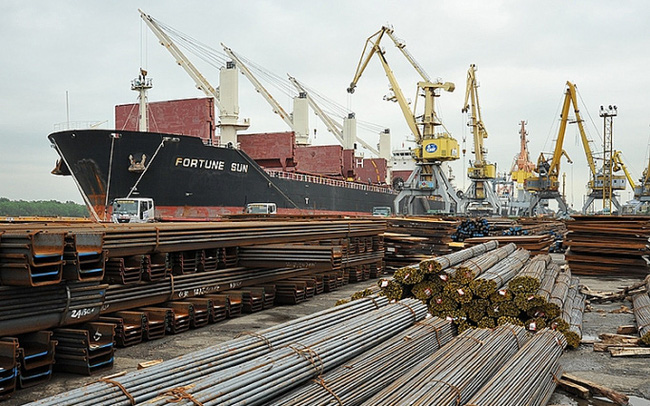Oil prices fell on the morning of July 23, but ended the week stable after recovering from a sharp drop earlier in the week, bolstered by expectations of a rebound in demand.
Brent crude oil futures fell 7 cents, or 0.1%, to $73.72 a barrel, after rising 2.2% on Thursday. For the week, Brent is headed for a 0.1% gain.
U.S. crude oil (WTI) futures fell 8 cents, or 0.1%, to $71.83 a barrel, after rising 2.3% on Thursday. WTI oil ended the week stable.
Demand growth is expected to outpace new supply, according to an agreement by the Organization of the Petroleum Exporting Countries and its allies, known as OPEC+, to increase by 400,000 barrels per day each month from August to December. .
Oil prices fell at the start of the week on concerns that rising COVID-19 cases of the Delta variant in the United States, UK, Japan and elsewhere had impacted economic growth.
Oil prices fell as much as $6 a barrel on Monday, but prices recovered those losses as investors expected continued crude demand fueled by continued declines in oil inventories. and vaccination rates increased.
Analysts raised their price forecasts for the rest of the year on expectations that rising vaccination rates would limit the impact of the Delta variant’s increased infections.
“We continue to forecast higher oil prices into late 2021 as oil demand outstrips supply growth,” said Commonwealth Bank commodity analyst Vivek Dhar.
Members of the Organization of the Petroleum Exporting Countries and major producers including Russia, a group known as OPEC+, agreed this week on a deal to increase oil supplies by 400,000 barrels per day from May August to December to cool down prices and meet growing demand.
However, demand still outstripped supply in the second half of the year, leaving Brent prices to trade within an average of $70 per barrel for the remainder of 2021, Morgan Stanley said.
U.S. Energy Information Administration data showed crude inventories in the United States, the world’s top oil consumer, unexpectedly rose 2.1 million barrels last week to 439.7 million barrels, the first increase ever. first from May 2021.
The most relevant risk to market fundamentals remains the slowdown in demand due to the novel coronavirus restrictions, Citi analysts said. “Only a really large shortage of demand will cause the market balance to become a surplus,” they added.
US energy companies add oil and gas rigs
US energy companies added oil and natural gas rigs for a third straight week for the first time since May, although oil prices fell for a second week after hitting a six-year high recent years.
Energy services firm Baker Hughes Co BKR.N said the oil and gas rig count, an early indicator of future output, rose 5 to 484 in the week to July 16, the highest level since from April 2020.
The total number of rigs has increased by 231 rigs, or 91%, compared to this time last year. Up 98% since falling to a record low of 244 in August 2020, according to Baker Hughes data going back to 1940.
US oil rigs rose by two to 380, the highest level since April 2020. Gas rigs rose by three to 104, the highest level since March 2020, up for 5 consecutive weeks, the chain longest since March 2018.
U.S. crude oil futures are trading around $72 a barrel this week, near the lowest level in nearly a month. Last week, the contract rose to $76.98, its highest level since November 2014.
Still, oil prices are still up about 46 percent so far this year, and some energy companies plan to increase spending in 2021 after cutting costs and completing over the past two years, although most focus on investor capital and returns, rather than expanding supply.
In fact, many analysts don’t expect the extra spending to boost output. Instead, they think it will only replace the natural decline in production.
Overall, US oil production is expected to fall from 11.3 million bpd in 2020 to 11.1 million bpd in 2021 before rising to 11.9 million bpd in 2022, according to the report. government forecasts. That compares to an annual all-time high of 12.3 million bpd in 2019.
After falling to a record low annual average of 433 rigs in 2020, according to Baker Hughes data going back to 1988, energy experts at Simmons Energy forecast the rig count would rise to the average. is 466 in 2021 and 583 in 2022.
This is higher than Simmons’ previous forecast of 451 rigs in 2021 and 558 in 2022.
The average annual rig count peaked at 1,919 in 2012, according to Baker Hughes.
Source: VITIC/Reuters
T&G International Joint Stock Company
Address: 352 Hue Street, Le Dai Hanh Ward, Hai Ba Trung District, Hanoi
Hotline: 0345786803
Email: hrm@tginterjsc.com
Website: http://tginternationa




















